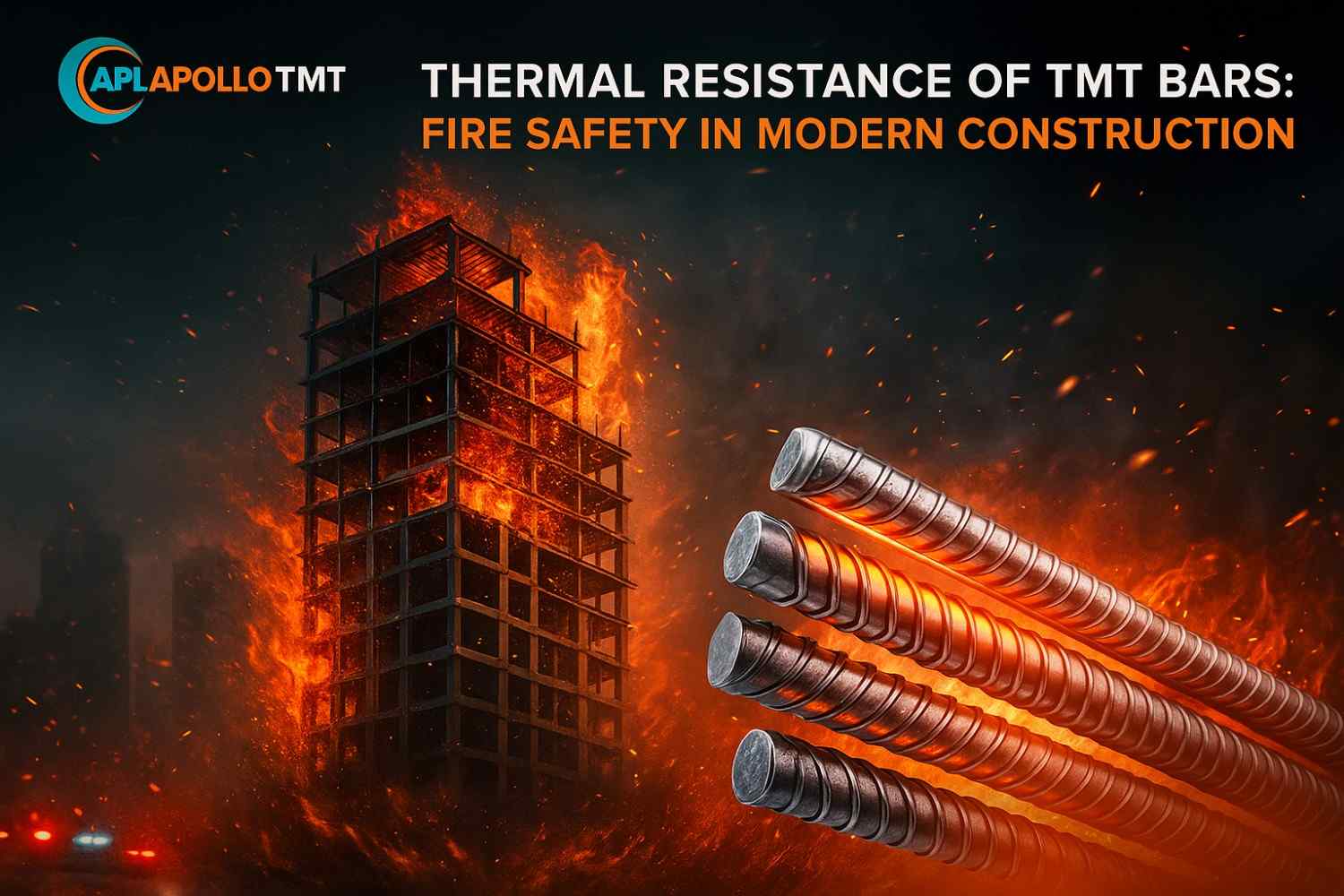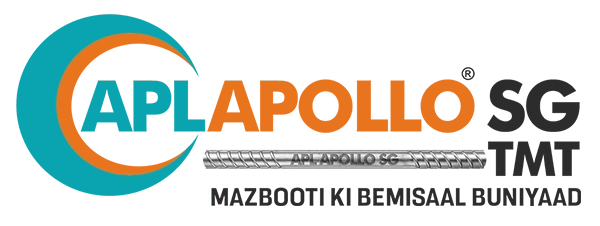
Introduction – Why Fire Safety is Non-Negotiable in Indian Construction
India’s urban landscape is changing fast—with high-rise apartments, shopping malls, and office towers dominating skylines. But alongside this growth, fire safety has become one of the most pressing concerns. Reports of building fires across cities like Delhi, Mumbai, and Kolkata highlight a critical question: Is the steel skeleton of our buildings strong enough to survive extreme heat?
This is where thermal resistance in TMT bars plays a decisive role. A building’s strength isn’t just about carrying loads—it’s about surviving crises like fires.
What is Thermal Resistance in TMT Bars?
Thermal resistance refers to a TMT bar’s ability to retain its strength and ductility when exposed to high temperatures. According to BIS (Bureau of Indian Standards) guidelines, a good-quality TMT bar must withstand temperatures up to 600°C without losing significant structural integrity.
Why is this crucial? During a fire, temperatures in enclosed spaces can rise between 500°C–650°C. If your reinforcement bars weaken, the entire RCC structure could collapse—even before flames are doused.
Frequently Asked Questions (FAQ)
Fe 500D vs Fe 550D – Which Performs Better at High Temperatures?
Both Fe 500D and Fe 550D TMT bars are widely used in India, but they behave slightly differently under fire conditions:
| Property | Fe 500D | Fe 550D |
|---|---|---|
| Yield Strength | 500 N/mm² | 550 N/mm² |
| Ductility | Higher (better elongation) | Moderate |
| Thermal Performance | Retains ductility longer during fire exposure | Retains higher strength but ductility may reduce faster |
| Ideal Use | Seismic zones, residential & mid-rise | High-rises, bridges, heavy load structures |
Key takeaway:
In earthquake + fire-prone zones, Fe 500D is safer due to ductility.
For high-load commercial projects, Fe 550D ensures strength even under extreme heat.
Why Fire-Resistant TMT Bars Are Essential for High-Rises & Commercial Projects
Let’s imagine two buildings facing the same fire:
Building A uses low-quality, uncertified bars → after 15 minutes of exposure, the bars lose strength, cracks form, slabs collapse.
Building B uses BIS-certified Fe 500D/550D bars → even after prolonged fire exposure, the structure holds long enough for evacuation and firefighting.
This difference could be the line between life and death, or between complete loss and partial damage. That’s why thermal resistance is now considered alongside corrosion resistance and earthquake safety as a must-have property for steel reinforcement.
APL Apollo TMT Bars – Built for Thermal & Structural Safety
At APL Apollo TMT, we understand that modern construction demands multi-dimensional safety. Our Fe 500D and Fe 550D TMT bars are:
BIS-certified for thermal resistance up to 600°C.
Designed with uniform rib patterns for better bonding with concrete.
Manufactured through a quenching and tempering process that enhances fire, corrosion, and earthquake resistance.
Available in all standard sizes from 8mm to 25mm—ideal for both residential and commercial projects.
👉 Check product details here: Fe 500D & Fe 550D TMT Bars – APL Apollo SG Infra
Conclusion – Building Future-Ready & Fire-Safe Structures
Thermal resistance in TMT bars isn’t just a technical detail—it’s a lifesaving feature. By choosing the right grade of TMT bar (Fe 500D or Fe 550D) for your project, you’re not only following building codes but also ensuring the safety of every life inside the structure.
Whether you’re a contractor, builder, or homeowner, remember:
A strong foundation isn’t enough—choose fire-safe steel for future-ready buildings.



